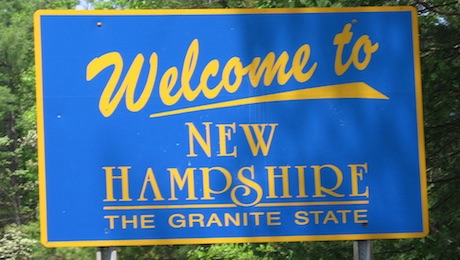By Bethany Blankley | The Center Square
Taxpayers in states controlled by Republicans see a better return on their investment in terms of how the government spends their tax dollars, a report published by the personal finance website, Wallethub, found. Nine of the top ten states for taxpayer ROI are Republican controlled.
New Hampshire, Florida, South Dakota, Georgia, Virginia, Missouri, Texas, Alaska, Utah and Ohio rank in the top 10 for the amount of state and local taxes paid compared to spending by state, according to Wallethub’s States with the Best & Worst Taxpayer ROI report. Virginia has a Democratic governor until this year, and its legislature is divided.
The report comes after a separate Taxpayer Survey found that 81% of those surveyed say the federal government doesn’t spend their tax dollars wisely; 66% said their tax rate is too high.

New Hampshire, Florida, South Dakota, Georgia, Virginia, Missouri, Texas, Alaska, Utah and Ohio rank in the top 10 for the amount of state and local taxes paid compared to spending by state, according to Wallethub’s States with the Best & Worst Taxpayer ROI report.
One-third said giving their money to charities would be a better use of their tax dollars than paying taxes, more than those who said they trust local government (32%), state government (22%) and the federal government (13%) to best spend their tax dollars.
“Tax Day can be a painful reminder of how much we have to invest in federal, state and local governments, though many of us are unaware of exactly what they give us in return,” John Kiernan, managing editor of Wallethub, said. “As a result, this creates a disconnect in the minds of taxpayers between the amount of money we should fork over on Tax Day (April 18 this year) – and how much we deserve in return.”
Based on the report’s findings, taxpayer ROI varies by state. While federal income-tax rates are uniform across the nation, states’ tax burdens aren’t. Some states are more dependent on federal government funding than others and other factors come into play, the report notes.
Because states have dramatically different tax burdens, the study sought to determine if residents living in high-tax states receive superior government services and if those living in low-tax states receive lower-quality services.
To determine in which state taxpayers receive “the most and least bang for their buck,” WalletHub contrasted state and local tax collections with the quality of the services residents receive in the categories of education, health, safety, economy, infrastructure and pollution. After determining each state’s weighted average in these categories and across 30 metrics, states were ranked according to an overall “Government Services Score.”
Democratic-controlled states ranked among the majority of the top ten in this ranking, with Minnesota ranking first. Virginia ranked second, followed by Vermont, New Hampshire, Maryland, Connecticut, Rhode Island, Utah and Massachusetts.
Data used for the ranking came from the U.S. Census Bureau, Bureau of Labor Statistics, numerous county and federal agencies, and nonprofit and other organizations.
According to its taxpayer survey, 72% said the federal government should have provided more COVID-19-related tax relief. Half surveyed said they’d move to a different state to pay less in taxes – a sentiment confirmed by 2020 Census Bureau data showing that over the past decade, more Americans have moved from blue to red states.
Another 37% surveyed said they’d move to a different country to pay lower taxes. However, the primary factor determining where people live, according to the survey, is cost of living (38%); 4% said taxes were a factor.
Roughly 18% of those surveyed said the IRS should be abolished; 44% said there’s great need for it to be improved; 7% said the IRS is doing a great job.
An overwhelming majority, 66%, said corporations should pay taxes at a higher rate than consumers. The same percentage said the middle-class currently pay “their fair share” in taxes.
Only 10% of those surveyed said their current tax rate is too low.


